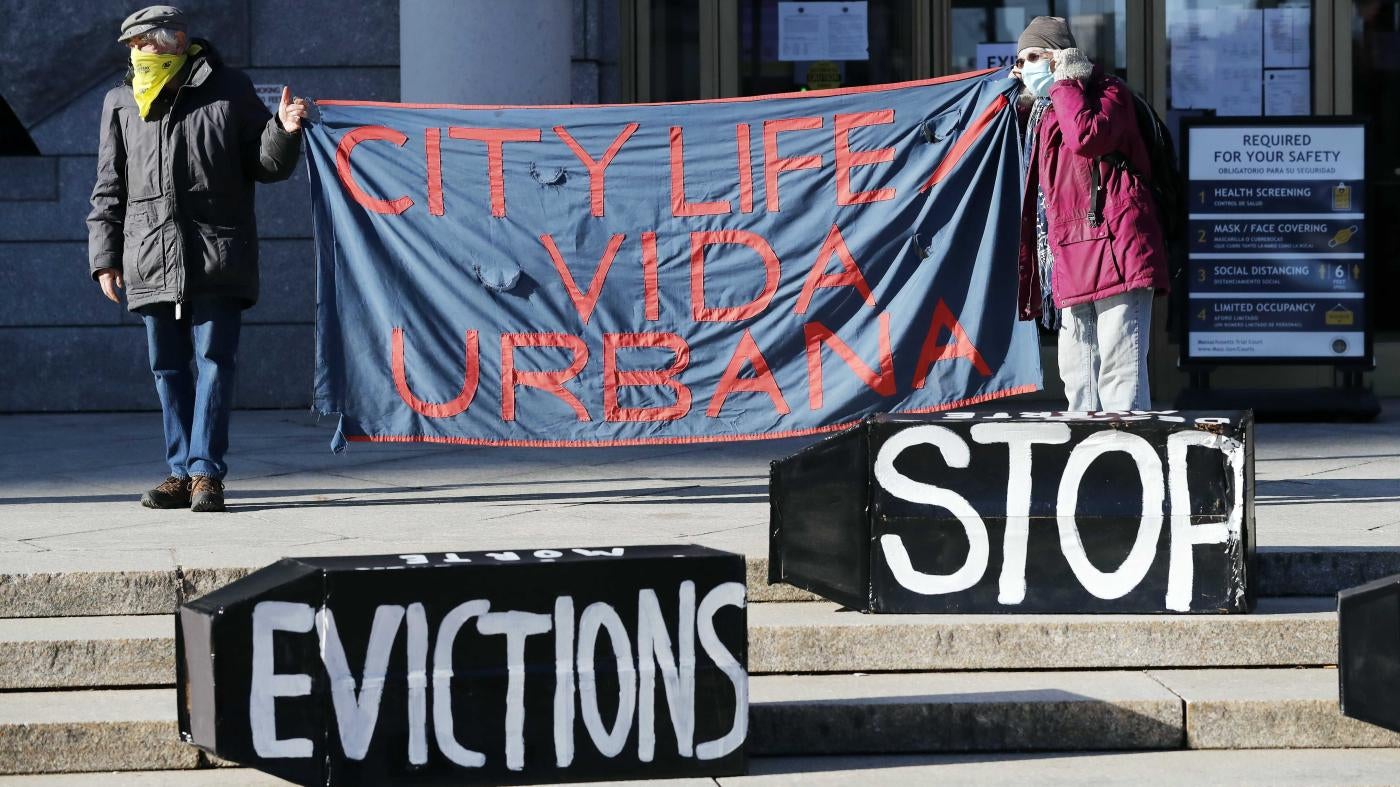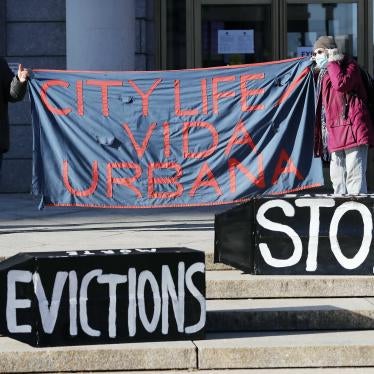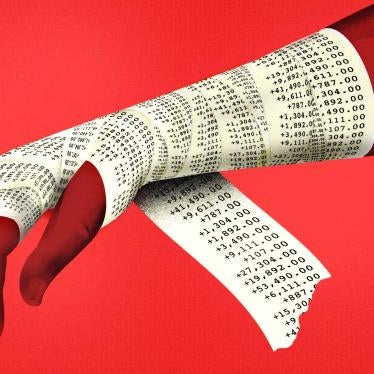The economic fallout from the Covid-19 pandemic has severely affected tenants and has led to widespread housing insecurity in the United States. Almost all US states acted quickly to protect renters, and by May 2020, 43 states had active eviction moratoriums that limited landlords’ ability to remove tenants who couldn’t pay their rent from their homes. In March, the US Congress passed the Coronavirus Aid, Relief, and Economic Security (CARES) Act, which included a moratorium on evictions for residential properties receiving certain federal subsidies.
However, by August, as the virus continued to spread, the CARES Act’s eviction protections expired, and only about 20 states still had active moratoriums. At the same time, federal financial Covid-19 relief was being reduced.
In September, the Centers for Disease Control and Prevention (CDC) passed a nationwide eviction moratorium that gave renters some protections, regardless of whether the property was federally subsidized, even in states that had allowed their moratoriums to lapse. On his first day in office, January 20, 2021, President Joe Biden extended the moratorium through March. However, due to flaws in the moratorium and its implementation, as well as insufficient financial relief, many renters have either lost or remain at risk of losing their homes due to their inability to pay.
This question-and-answer document discusses the impact of the pandemic on tenants’ right to housing and the current state of pandemic-related tenant protections in the United States.
1. What does human rights law require governments to do to protect tenants?
2. How has the Covid-19 pandemic affected tenants in the United States?
3. What are the consequences of an eviction?
4. What protections currently exist for tenants?
5. Has the CDC moratorium stopped all evictions?
6. How effective have state-level moratoriums been?
7. What would a better eviction moratorium look like?
8. Will tenants still owe unpaid rent?
9. How have landlords been affected by the pandemic?
1. What does human rights law require governments to do to protect tenants?
Adequate housing is a human right. Under international human rights law, a country is obligated to protect and guarantee this right for all, without discrimination of any kind and regardless of an individual’s income. Housing is more than mere shelter and needs to be stable, affordable, and habitable.
The pandemic has placed all aspects of the right to housing at risk. Housing has become more insecure and less affordable for millions of people across the United States. Evictions often lead to individuals moving in with family or acquaintances, in crowded quarters, increasing the risk of transmitting or contracting Covid-19. Such crowded housing can hardly be considered habitable when a deadly virus is circulating.
Evictions for inability to pay in this context not only are inconsistent with public health guidelines urging residents to stay home, but also intensify inequality and overwhelmingly affect the poorest and most socially and economically vulnerable parts of society. Eviction procedures need to be fair, respect due process, and take into account all the interests and rights at stake. Evictions can result in violations of international human rights law if they lead to homelessness or increased risks to other rights, including the right to health.
Governments are the ultimate guarantors of the right to housing and are obligated to protect financially distressed tenants and homeowners from losing their homes for inability to pay. Congress’s failure to enact new rounds of relief until just days before existing protections expired has left tenants in a state of perpetual uncertainty. Individual states, however, should not abdicate their responsibility to protect renters while waiting for the federal government to act. Current eviction moratoriums have had mixed success. Both federal and state governments should strengthen eviction protections and ensure that everyone receives the financial relief that they need, so that nobody loses their home because of this crisis.
2. How has the Covid-19 pandemic affected tenants in the United States?
Estimates of the scale of the looming eviction crisis vary. Census Bureau data indicates that in December, almost one-fifth of renters – 14 million people – were behind on rent. Researchers for the National Low Income Housing Coalition have estimated that as many as 40 million people are at risk of eviction. Estimates of total unpaid rent are as high as $70 billion.
The crisis is especially severe because renters tend to be younger, have a lower income than homeowners, and be people of color. These groups have been hit especially hard by the pandemic’s economic fallout, while many people with higher incomes have avoided the worst of the recession. According to New York University’s Furman Center, an urban policy research center, in New York City the majority of households with at least one member working in a sector facing mass layoffs or closures due to the pandemic were renters. According to a September Urban Institute survey, since March, nearly 8 percent of Black and Latinx households have received an eviction notice or were threatened with eviction, compared with just over 2 percent of white renters.
Though renters have been particularly affected, many homeowners are also at risk of losing their homes. Millions have fallen behind on their mortgage payments and, like renters, need immediate protection and financial assistance. A foreclosure moratorium for federally-backed mortgages is in effect until the end of February, and Biden has ordered federal agencies to extend it through March. In addition, some states have enacted broader protections.
3. What are the consequences of an eviction?
The most obvious risk is homelessness, but the risks do not stop there. Eviction is always a public health problem, and this issue is especially relevant during a pandemic. Those facing homelessness often resort to sleeping outdoors or staying in overcrowded shelters. Others move in with family or friends, leading to more crowded dwellings, and consequently, a greater risk of transmitting or catching Covid-19.
Previous failures to adequately protect tenants have already had deadly consequences. According to a recent UCLA study, expiring state eviction moratoriums between March and September, when the national moratorium was issued, led to over 400,000 Covid-19 cases and nearly 11,000 excess deaths in the 27 states studied that allowed their protections to lapse.
4. What protections currently exist for tenants?
The federal eviction moratorium enacted by the CDC limits landlords’ ability to remove tenants from their homes when tenants are unable to pay rent. This moratorium, which applies nationwide, was first enacted on September 4, to last until December 31. Just four days before it was to expire, Congress extended the moratorium through January. The delay in extending it caused enormous stress and uncertainty for tenants. On his first day in office, Biden extended this moratorium until March 31.
Various states and localities have also passed their own moratoriums, some of which provide protections beyond those provided by the CDC.
The federal government, as well as some state governments, have also enacted rental assistance programs that give financial relief to tenants to help them pay rent and rent arrears. December’s economic relief package included $25 billion for rental assistance, and Biden has called on Congress for an additional $30 billion for such programs.
5. Has the CDC moratorium stopped all evictions?
No. The CDC’s moratorium has been a crucial stopgap measure that has potentially saved millions from losing their homes. However, there have still been numerous reports of evictions for inability to pay across the country. This is due to serious flaws in the moratorium.
First, and most crucially, many of the moratorium’s provisions are vaguely worded. Because it is ultimately enforced in local courts, individual judges in different localities have varied greatly in how protectively they have interpreted it. For example, some judges have held it does not extend to “holdover evictions” in which a tenant’s lease ends and the landlord refuses to renew.
Second, in some cases, judges have required tenants to prove that they suffered substantial economic hardship and that they made “best efforts” to obtain government assistance and pay rent, a process that can be overly burdensome for tenants. Finally, the moratorium does not require landlords to inform tenants that they are protected, leading some to leave their homes because they are unaware of their rights, sometimes without ever going to court.
Another major flaw in the CDC moratorium is that, even when it keeps tenants in their homes, it often still allows landlords to file for eviction, which initiates the process of removing a tenant. Between January 10 and January 16 alone, there were 4,901 new eviction filings in just the 27 cities across the country tracked by Princeton University’s Eviction Lab. Because these records are often public, the impacts of an eviction filing can follow people for many years, making it significantly harder for them to find housing. Landlords often refuse to rent to those with an eviction filing on their record, and in some cases, will use the threat of filing for eviction to coerce tenants into leaving their homes.
6. How effective have state-level moratoriums been?
The CDC’s moratorium is just a national baseline. States are free to enact stronger tenant protections. However, many states do not currently have active eviction moratoriums. Among the states that do, the actual protections vary greatly. Some provide fairly robust protection, but other moratoriums have flaws similar to those in the CDC’s.
7. What would a better eviction moratorium look like?
To better protect tenants’ right to housing, an eviction moratorium should have five features. First, it should make receiving protection as simple as possible, by, for instance, only requiring that a tenant file a simple hardship declaration stating either that they are unable to pay rent or that eviction would leave them homeless or pose health risks. Second, it should explicitly extend to holdover cases, when a tenant’s lease ends, and the landlord refuses to renew. Third, tenants should be informed of the protections, and the burden should be on landlords and courts to notify tenants of their rights. Fourth, it should prevent landlords not only from removing tenants from their homes but also from filing for eviction. Finally, it should last until the end of the pandemic and for a reasonable time thereafter, to ensure stability for tenants.
A good model is New York State’s Covid-19 Emergency Eviction and Foreclosure Protection Act, enacted on December 28. The Act stops nearly all evictions, including holdover evictions. To receive protection, a tenant only needs to file a simple hardship declaration form stating either that they are unable to pay rent or that moving would pose a significant health risk to themselves or a member of their household. Landlords are required to provide this form to tenants before seeking an eviction or demanding rent, and they cannot file for eviction if a tenant has submitted a declaration. The act also protects small property owners from foreclosure.
8. Will tenants still owe unpaid rent?
Yes. Even a more robust moratorium does not by itself address the long-term consequences of the current crisis. Even when evictions are paused, tenants are still accumulating rent debt and could be subject to eviction once moratoriums are lifted.
What tenants struggling to pay rent need is rental assistance in the form of financial relief. Such relief should have minimal eligibility requirements and should be made available to all who qualify. In the December Covid-19 relief package, Congress approved $25 billion for rental assistance programs, which would help eligible tenants pay rent going forward and also pay off their rent debt. Some advocates worry that current relief efforts are only enough to help a fraction of financially distressed tenants. Biden has called for Congress to approve an additional $30 billion for such programs, but the National Low Income Housing Coalition estimates that at least $100 billion in total rental assistance is needed.
9. How have landlords been affected by the pandemic?
While many large institutional landlords can absorb losses stemming from unpaid rent, many small landlords are struggling and need their tenants to receive rental assistance. Though some moratoriums, like the one passed in New York, temporarily prevent mortgage lenders from foreclosing on small landlords who miss payments due to economic hardship, many could be financially distressed after the pandemic ends.
This could have serious consequences for the rental market. Small property owners typically evict at lower rates and charge lower rents than large corporate landlords. Many advocates are concerned that, without financial relief, large corporations will purchase millions of distressed properties, making housing less affordable and more insecure. This exact dynamic occurred after the 2008 financial crisis, and major private equity firms are reportedly viewing the Covid-19 economic downturn as another opportunity to cheaply acquire rental properties.



